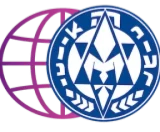Romi Morales, Mazkirut Olamit of Hanoar Hatzioni
Just a few weeks ago, we gathered around the Seder table to read the Haggadah, a text which recounts the narrative of the exodus of Am Israel from slavery in Egypt and its passage to freedom. Unnoticed in the text appears an excerpt that says:
“It came to pass that Rabbi Eliezer and Rabbi Yehoshua and Rabbi Elazar, son of Azarya, and Rabbi Akiva and Rabbi Tarfon were in Bnei Brak discussing the Exodus from Egypt. They discussed it all night until their students came to them to say, “Our teachers, the time has come for saying the morning Shema!”
As a child, I wondered why this paragraph was in the Haggadah. As I grew up, I understood the background of these Rabbanim during this Pesach Seder: oppression by the Roman Empire, restrictions that violated our customs and traditions as Jews and a deep concern for the continuity of our people. In this context takes place this Pesach Seder, during which, according to some, our sages debated whether we should rebel against the oppressive tyranny.
According to the narrative recounted in the Haggadah, “(the Rabbanim) were discussing the Exodus from Egypt all through the night”. I imagine the amount of responsibility they must have felt on their shoulders in these moments. That night, different from all other nights, they had to decide when would be the right moment for them to fight for their freedom. So many questions must have arisen! Is this the right time for a rebellion? Do we have the necessary tools to fight our enemy? Are we willing to suffer numerous losses of our people? What will happen if we are victorious? What will happen to our people if we are defeated? Are we willing to handle the costs of a defeat? In this case, how can we ensure the continuity of Am Israel? Given the possibility of risking our lives and that of our students to achieve freedom, should we be more cautious and wait a little longer? Surely, more questions and arguments for and against were raised, but as the text says, the conversation went on “until their students came to them to say, ‘Our teachers, the time has come for saying the morning Shema!’”
Some claim that the discussion between the Rabbanim came to an end when the students called them to act.
They are the ones who, in some way, according to this interpretation, put an end to the philosophical discussion and proposed to translate it into actions.
Lag BaOmer, in a way, aims to relate the continuation of that excerpt told in the Haggadah. In Lag BaOmer we celebrate, among other things, the fact that Rabbi Akiva’s students stopped dying of a magefa (epidemic) that had emerged. However, there are those who believe that this magefa was no more than a revolution against the Romans, that the Jews, led by Bar Kochva, initiated. They achieved, even though for a short time, a return to Jewish independence.
True, this will not be the first or the last time that youths decide to place themselves at the forefront when it came to ensuring the continuity of our people. The same attitude we saw with the students of Rabbi Akiva, we had also seen in Leszno 27 during the Shoa, with Dvora, Yaakov, Abraham and Moshe (z”l), members of our movement who gave their lives to defend our young state, and we continue to see it to this day, with our beloved olim proudly deciding to join Tzahal, The Israel Defense Forces.
And in the same breath of deep pride that I feel for each one of these youths, who with determination decide to be at the forefront when it comes to protecting our Medina, coexists my deepest desire for shalom, peace. So that we can be “A free nation in our land, the land of Zion and Yerushalayim” where our youth can fulfill all their potential and creativity in the building of a better society for Am and Medinat Israel and all of humanity. This is our job as a Tnuat Noar.
“The youth movement is an expression of adolescent independence. It challenges the conventional, expresses criticism regarding past and present situations and is characterized by the desire of correcting and creating a better society for the future. A youth movement loyal to its task does not conform to sterile criticism: it leads its chanichim on a path of creativity and action. This path is expressed by taking challenges in a changing and dynamic world, with the responsibility that we have as a formative educational entity.”
Darkenu
Chag Sameach!










